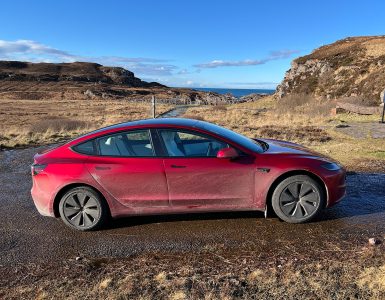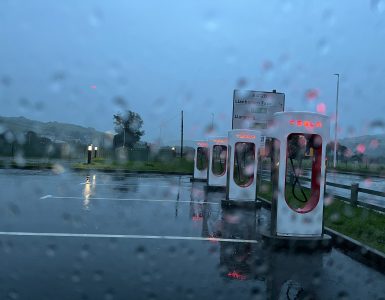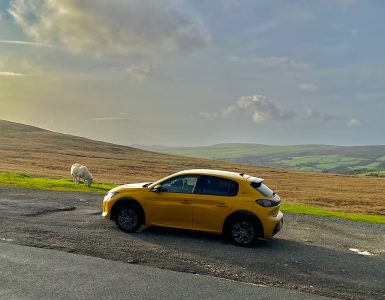Local Government has a responsibility for ensuring air quality does not breach official limits but compared to city and national governments has a limited toolbox of effective measures at its disposal. Most of these measures influence traffic that stops in a local area but has little effect on polluting vehicles that travel through their borough. Broadly they involve a Carrot and Stick approach to encourage cleaner vehicles to be used and discourage the most polluting.
The most effective measure is a CAZ (clean air zone), also known in London as the ULEZ. At city level these are by far the most effective way to reduce air pollution as it deters people from driving or buying the most polluting cars in cities. These will be covered in a separate article.
1 Residents parking surcharge for diesel S
Vehicles surcharged according to London ULEZ (ultra low emission zone) criteria. Flat levy on all cars that are are pre Euro 4 petrol or pre Euro 6 diesel cars.
Advantages
- Uses a criteria for judging what is clean. and what is not, that is going to be widely used and excludes many but not all of the most polluting cars, vans and lorries.
- The fact that only a fraction of diesels on the road are Euro 6 certified will cut back the number of diesels on the road.
Disdvantages
- The London ULEZ criteria allows some massively polluting Euro 6 diesels to continue escape any penalty. Although on average Euro 6 diesels are around 7x as polluting as a petrol car for NOx, compared to around 13x for Euro 5, some Euro 6 compliant vehicles passed the flawed test despite being 25x as polluting as petrol car on the road.
Example in use
Merton in SW London has been applying a surcharge for all diesel vehicles on resident parking permits of £90 in 2017, £115 in 2018 rising to £150
2 Dirty vehicle purchase levy S
This policy doesn’t affect current owners of a dirty vehicle and is only applied for residents when they apply for a permit for a vehicle for the first time – ie a new permit or a change of vehicle.
Advantages
- It only levys a charge on future purchase of a highly polluting vehicle at the choice of owner.
- As a result the levy can be higher and the emission standard can be stricter.
- By including any change of vehicle – new or second hand, dirty vehicles will be encouraged to leave the borough or city every time a vehicle changes ownership.
- Controlled parking areas should provide data on fleet renewal rates on cars and vans in the borough. The policy should set a target that at least 90% of renewed cars will be to less polluting vehicles.
- Little political blowback as existing owners “who bought their polluting diesel in good faith” are unaffected.
- It also enables clear guidance to the many residents who want to buy a clean car but get fobbed off with a low CO2 diesel that may be very polluting.
- Possible standard – RDE1 is an option for diesel vehicles and is compulsory for all new cars and vans sold from 1st September 2019. Even RDE1 diesel vehicles will be much cleaner than Euro 6 models as they can “only” be 3x as polluting as a petrol car on the road but this standard is at present not listed on the DVLA database.
- Suggested standard – an RDE2 diesel standard further narrows down the number complying diesel models. RDE2 has the advantage that it is already the standard for a clean diesel that decides UK Vehicle Excise Duty (VED) on diesels. It is therefore on the DVLA database and owners can see it on their vehicle registration document.
- RDE1 or WLTP for petrol cars will be will be very low particulate emissions as well as NOx because petrol particulate filters were required to pass this standard.
Disadvantages
- Existing owners and those with off street parking are unaffected unless a surcharge also applied to street parking charges. On street charges would be more difficult to implement. This could be dealt with using a council driveway tax from which owners would only be exempt it their cars passed the same clean air requirements as resident parking permit holders or were EV.
- Drivers would need to know or be able to find out whether their car was dirty
- These policies need to exempt classic cars ie as defined by DVLA. You do not want to be seen to be against a few MGB owners tootling around on a sunday afternoon.
Example in use
None currently
3 Parking bay allocations
Diesel free parking bays CS
Self explanatory-
- not designed to prevent diesels parking but to ensure high levels of pollution are concentrated away from areas where they do most harm
- ensures no diesel vehicles run their engines close to large numbers of people when parked . A real bonus as there is currently no effective policy to prevent “idling”.
- Locations would include high st shopping, schools, the entrances to supermarkets and the indoor lower levels of parking multistories.
EV parking near shops C
- Variation on the above – a few free pure EV (BEV) only parking spaces in convenient places for short limited periods – ie 30 to 60 mins
4 Improved cycle friendly policies inc lanes and parking
commuter cyclists are more experienced and have their own requirements but occasional and family cyclists feel safer on where
- there is a segregated cycle lane and safe way to cross busy junctions
- there are easy places to park up
- cycles routes in 20 mph zones where the air isn’t polluted and there is less noise would encourage cycling
- the standard for assessing junction and road layouts should be “could a 12 yr old cycle this route safely”
5 Inform residents about air pollution and their own role
as they especially as they apply for residents parking permits
- Health effects of pollution
- On car emissions
- App
- Idling
A surprising number of people subscribe to the following sets of views
- air pollution doesn’t come from my diesel – and even if it doesn’t I bought it in good faith so I should be allowed to drive it where I want with the same subsidy in tax rates as when I bought it.
- all cars should be banned or such heavy charges for using them that the traffic is reduced substantially. We should all use bicycles.
- This is all about revenue raising.
MyUrbanCar view.
Taking the 3 concerns on directly
- the fact is drivers chose to buy a diesel because the government subsidised the costs of buying and owning a diesel car. While owners were mis-sold dirty vehicles labelled as green due to emissions cheating and a failure of regulation, if they have had a diesel for over 3 years they have had the benefit of a taxpayer subsidy. A subsidy should rightly cease if public policy changes.
- the opposite argument also has issues. If you halved the amount of traffic in London you would dramatically cut the background level of pollution especially particulate. NOx on the other hand is very localised close to the polluting vehicles. For NOx what matters as you walk down the street beside a line of cars, is how polluting are the nearest 10 cars. On a conservative estimate the average diesel on the road is 10x as polluting as a petrol car so:
a. 10 petrol cars = 10 petrol cars worth of NOx emissions
b. 7 diesels + 3 petrols = 73 petrol cars worth of NOx emissions
c. 5 diesels + 5 petrols = 55 petrol cars worth of NOx emissions
d. 2 diesels + 8 petrols = 28 petrol cars worth of NOx emissions
e. 1 diesel + 4 EVs + 5 petrols = 15 petrol cars worth of NOx emissions
f 5 petrols + 5 EVs = 5 petrol cars worth of NOx emissions
g 4 diesels + 6 EV’s = 40 petrol cars worth of emissions. What should be fairly clear is halving the number of vehicles is nowhere near as effective at cutting pollution as cutting down or eliminating the number of the more polluting vehicles - Saying drivers are being punished over air pollution as a factually incorrect. Air pollution costs taxpayers billions in extra healthcare costs. The cost to the NHS alone of the pollution from each diesel vehicle has been estimated at around £16,000 over the lifetime of the vehicle. This far in excess of the costs for petrol and other cleaner cars. Anything under around £1,600 per annum is effectively a state subsidy to cause ill health.
7 Green Walls
High walls of certain plants – or solid walls, have the effect of penning air pollution on one side of the wall. It increases pollution on the side of the wall with pollution, such as a busy road, but reduces it on the other side eg a school.
8 Traffic do not enter spaces
There is a petition for this to be introduced at bus stops. Potentially useful on roads that often have stationary or very slow moving traffic it saves those waiting at the bus stop from being next to the toxic exhausts of stationary vehicles. A problem arises if drivers accelerate as they enter the zone – eg to catch a traffic light at the other side of the zone. Diesel vehicles produce much more pollution when accelerating so it could make the air at the bus stop worse if not well sited.






